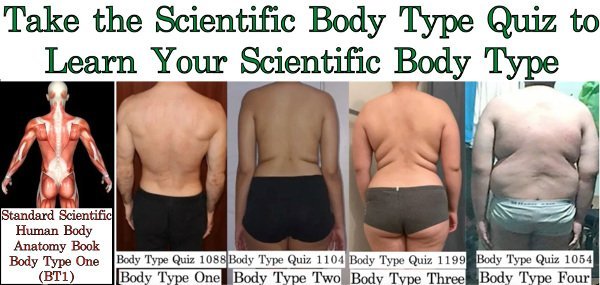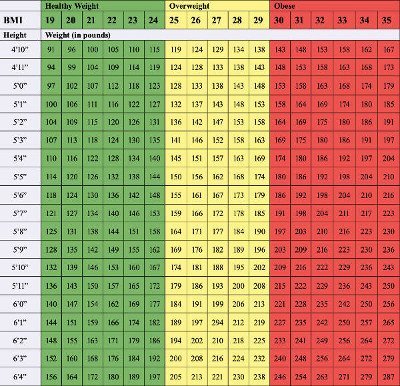
Fellow One Research lead scientific researcher, Marc Nelson, appeared on The Podcast by KevinMD with host Dr. Kevin Pho to discuss why current scientific body type standards — the Standard Body Type One (BT1), Body Mass Index (BMI), and Basal Metabolic Rate (BMR) — are inaccurate indicators of health & obesity. The conversation clarified that the thoroughly discredited and debunked/disproven somatotype three body types – endomorph, mesomorph, and ectomorph – are not based on real science and have no definable scientific variables. The same is true for the hormone body types as well as Kibbe, triangle, 10, pear, apple body types, etc. They are all unscientific, arbitrary, subjective, baseless, nonsense shapes.
The only body type that is currently accepted by mainstream scientists and medical doctors is the Standard Scientific Human Body Anatomy Book Body Type One (BT1) found in any scientifically approved human body anatomy book. When you or any human being visit your medical doctor for your annual check-up, your body and health are judged by the Standard Body Type One (BT1) in relation to BMI and BMR. The next time you visit your doctor, ask them what your scientific body type is…
Those three current scientific body type standards are inaccurate because they fail to take into account skinny fat (cellulite, thin fat, loose skin, saggy skin, crepey skin, normal weight obesity), no less.
Inaccurate Current Scientific Body Type Standards (BT1, BMI, BMR)
- Standard #1: Standard Scientific Human Body Anatomy Book Body Type One (BT1) – AKA The Standard Body Type One (BT1) found in any scientifically approved human body anatomy book. This first body type standard is not accurate because it fails to recognize that it is a scientific/genetic fact that any part of the human body can be underdeveloped to whatever degree and does not account for any form of skinny fat. This is the ONLY body type currently recognized and accepted by mainstream science and medical doctors.
The Standard Scientific Human Body Anatomy Book Body Type One (BT1)
- Standard #2: Body Mass Index (BMI) – It is inaccurate because it does not calculate skinny fat. For countless people worldwide, even when they are within their safe BMI weight range they still have too much fat on their body, which is the technical definition of normal weight obesity and carries the same general health risks as obesity (which is defined as having too much fat on your body placing you outside your safe BMI). Nor does BMI realize the possibility of excess muscle mass (think Dwayne Johnson “The Rock”), which can put one into the overweight or obese column of their BMI weight scale but they are not overweight or obese.

Body Mass Index (BMI) Weight Range Chart - Standard #3: Basal Metabolic Rate (BMR) – It is inaccurate as it does not calculate skinny fat in the standard Mifflin St Jeor Equation and standard Harris-Benedict Equation for activity. Science recognizes that one pound of muscle mass burns six calories daily, but one pound of fat/skinny fat only burns two to three calories per day, which directly, negatively affects metabolism. If you have skinny fat on your body yet are within safe BMI, you are likely eating too many calories daily following your standard BMR calculations.
The Podcast by KevinMD – How Inaccurate Current Scientific Body Type Standards Negatively Affect Health & Obesity
At present, mainstream scientists and medical doctors continue to view obesity strictly as an energy (calorie) imbalance. That is, the only reason that a person is obese is that they are eating too many calories daily above their standard BMR which takes them outside their safe BMI chart weight range columns (green) into the unsafe overweight and obese columns (red). The definition of obesity is having too much fat on your body. According to mainstream scientists and medical doctors, to lose the extra fat (calories) weight on your body and get back within your safe BMI to once again be a Standard BT1, all you have to do is clean up your diet to reduce your daily calorie intake to at or below Standard BMR for a long enough period of time. You can also increase calories burned through proper exercise to expedite the process.
Contrary to the latest science, mainstream scientists and medical doctors remain stubbornly adamant that the sole reason obesity exists is because you are eating too many calories daily due to poor dietary choices, and perhaps poor exercise and/or lifestyle choices as well. However, recent science including Body Type Science is showing that there are very real problems with this approach that mainstream scientists and medical doctors cannot and refuse to explain. For one, why are there countless people worldwide who, even when they are within their safe BMI, still experience some form of skinny fat including normal weight obesity, along with body dysmorphia, and do not look like the Standard BT1?
For many more, this has been a fact since birth — they have never looked like or been the Standard BT1. Moreover, there are many people worldwide who, according to the standard BMI weight chart are overweight or obese, but all their other health-indicating factors including blood pressure, heart rate, blood sugar (A1C), cholesterol, etc. are normal. This has led to the more recent scientific terms obesity paradox and metabolically healthy obese (MHO).
Body Type Science – Improving the Accuracy of Current Scientific Body Type Standards
Body Type Science is working to make the three current scientific body type standards more accurate. Our research data is shedding valuable, much needed light on skinny fat with the goal of updating the BT1, BMI, and BMR to account for no less than skinny fat. As well, Body Type Science helps you accept your genetic scientific body type, allowing you to make healthy science-based diet, exercise, and lifestyle choices, thus encouraging improved mental, emotional, and physical well-being in the short and long term.
Fellow One Research’s cutting-edge science-based tools can help you identify and understand your genetic scientific body type, including the online Scientific Body Type Quiz and Scientific Weight Loss Program Diary. Listen to this educational and informative The Podcast by KevinMD episode on Apple Podcasts.




